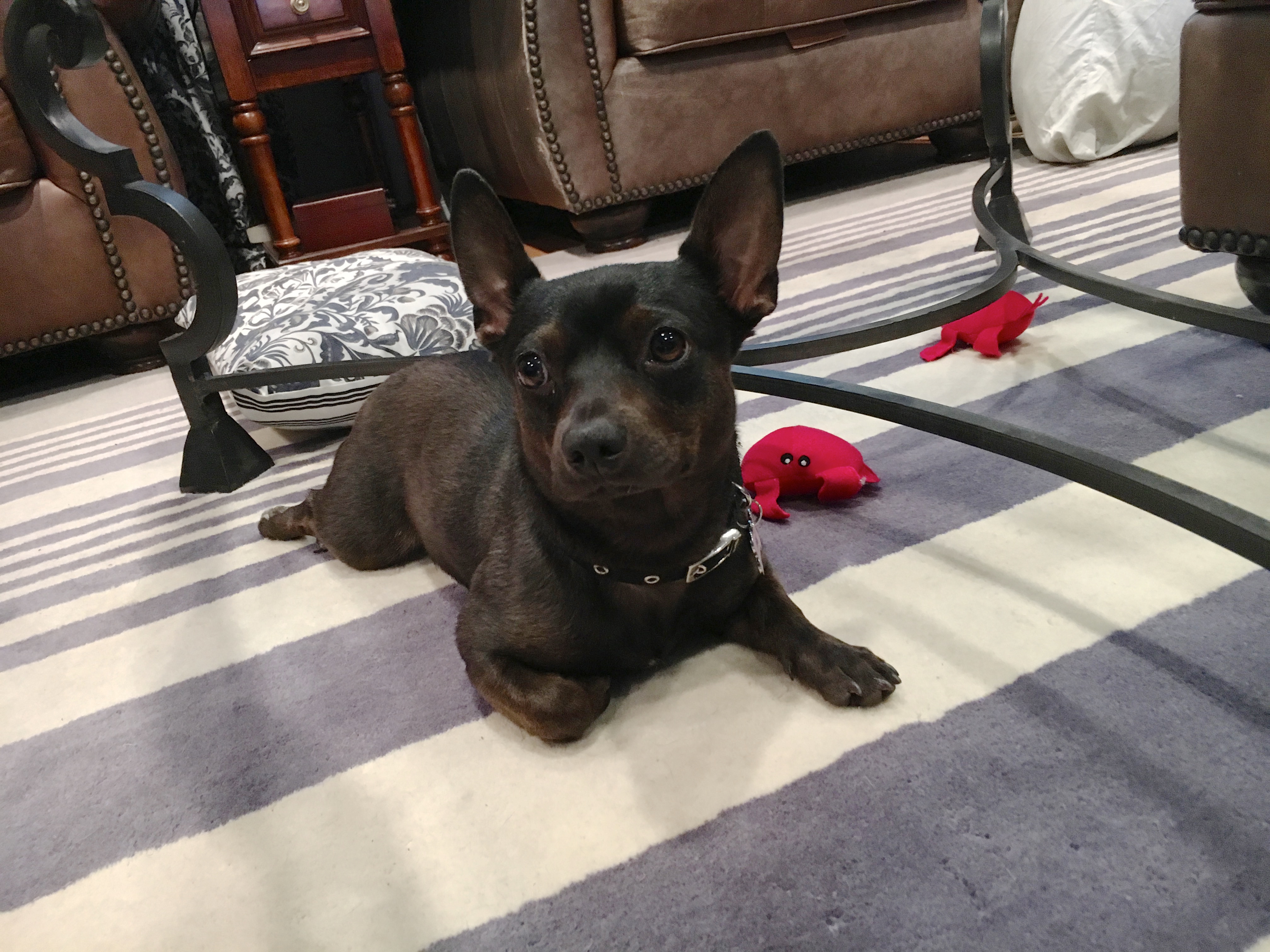How to Help a Rescue Dog Learn a New Name and Stop Pulling on the Leash
By: David Codr
Published Date: May 28, 2017
Hoppy is a six-month-old Chihuahua mix who lives in Los Angeles. Her guardian set up this dog behavior training session to get her to stop jumping up, stop pulling on the leash, eliminate her occasional anxiety and listen to commands better.
Hoppy was only adopted a few months ago from a LA rescue group. I gave her guardian some advice over the phone when we booked the session which had helped her eliminate a few problems before the session even began.
When I did arrive for the session, Poppy was a little cautious. She stayed close to her new guardian until I did something that helped her feel more comfortable meeting me.
People often forget to slow down or start out a little slower the first time they meet a dog. In some situations this is fine, but some dogs (including many resumes) can be a little more reserved. When you meet one of these dogs the first time, taking an extra minute and using some positive reinforcement can go a long way towards developing a great relationship.
One of the things Hoppy’s guardian asked me to help her with was the dog not responding to her name. When we have a rescue dog, we often don’t know the dog’s name or in some cases we don’t like the name the shelter gives the dog. Unless this is an owner surrender, its likely that the name you are introduced to was only selected recently and doesn’t hold much meaning to the dog.
I spent a quick minute showing the guardian how she can use positive dog training to help Hoppy not only respond to her new name, but how to have her feel great about it.
This is a great example of why you will usually find a good dog trainer or dog behaviorist using force free dog training. Its fun, it helps the dog enjoy the association and most importantly, it works.
One of the other problem’s Hoppy’s guardian wanted help with was her leash behavior and get her to stop pulling on the leash. I pulled out a Martingale collar and headed outside with her guardian so we could do some leash training.
Now the structured walk I describe in the above video is great for building up a dog’s respect for the handler, its not the most fun walk a dog can have. This is a good time to remember how important balance is. Too much of anything (structure or fun) can lead us astray.
Id like the guardian to practice the structured walk for the next week (walking once a day at minimum) before she starts to sprinkle in fun on the walks. Just about all of the best dog behaviorist in Los Angeles will tell you, allowing the dog to have more freedom for the last quarter of the structured walk is a nice reward. But only if the dog does well on the structured part of the walk first.
This way the longer leash and extra freedom is a reward for good behavior. After another week or two this way, then the guardian can incorporate a freestyle leash walk where the dog can go as it pleases. But these walks should always be fewer in frequency than a structured walk until all of Hoppy’s dog behavior problems are solved.
We wrapped up the session by shooting a Roadmap to success for hoppy’s guardian. You can watch it by clicking on the video link below.
Categorized in: Dog Behavior




